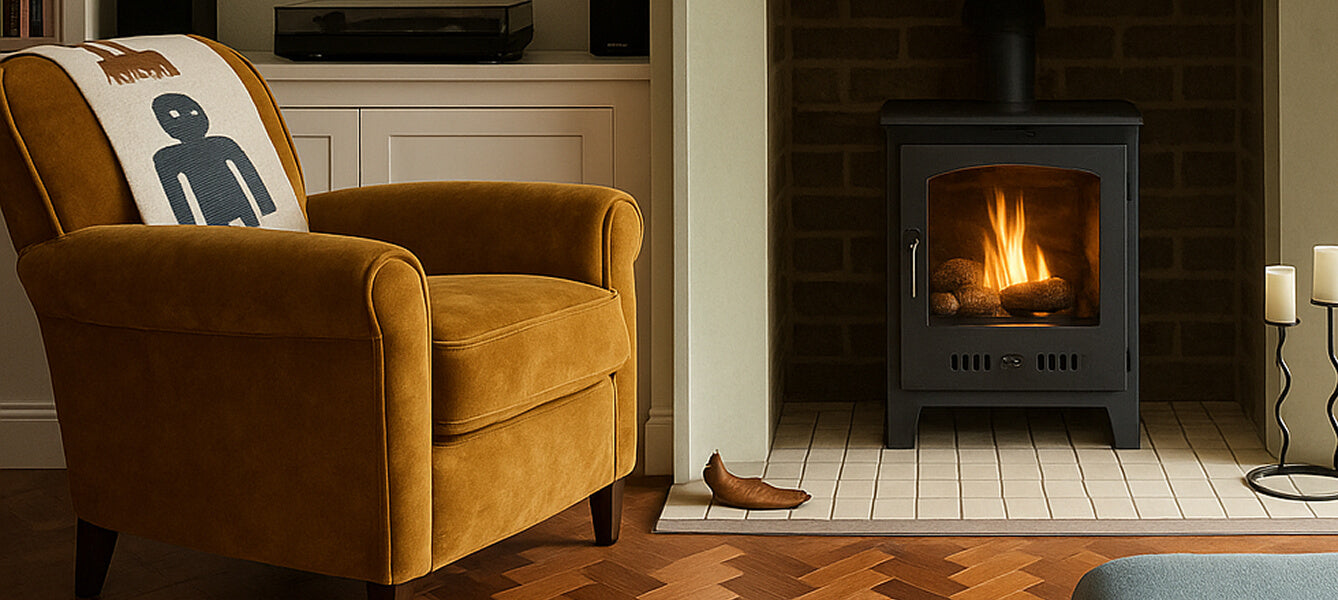
Understanding Bioethanol Emissions: Fireplace FAQs Answered
Bioethanol is quickly becoming one of the most popular fuels to use in home fireplaces. But what exactly is it?
If you’ve been tempted to get a bioethanol fireplace for your home, you’ll probably have a lot of questions about this type of fuel, especially regarding its emissions.
Understanding bioethanol fireplace emissions is important, so in this guide, we’ll provide you with an overview of bioethanol emissions to give you a better understanding. We’ll also answer the most common bioethanol burning emission questions people have about it.
Read on to get all the answers you need to help you make an informed decision regarding your bioethanol fireplace.
Bioethanol Fuel Overview

Before we look at some common questions about bioethanol fuel and emissions, it’s important to know what bioethanol actually is.
Sometimes called just ethanol, it is a renewable fuel that’s usually made mainly from plant materials. Ethanol is an alcohol, and it is made through a fermentation and distilling process using the sugars in different crops like wheat and corn.
Bioethanol is primarily made from the by-products of crops. These parts are normally thrown away, so bioethanol provides a way to make use of them, ensuring the fuel is even more environmentally friendly.
Understanding Bioethanol Fireplace Emissions: Top Questions & Answers
Got questions about bioethanol emissions? Here are some of the answers you might be looking for:
1. What Emissions Does Bioethanol Release?
Let’s start with the most important. What are the actual emissions from ethanol fireplaces?
One thing that bioethanol does not release is smoke. This is produced by wood, coal and charcoal during the combustion process, and this is the reason why such fireplaces need a chimney.
Bioethanol does not produce any soot either. Instead, it burns cleanly.

As it combusts, it releases some carbon dioxide – but not much. To give you a comparison, when you use bioethanol in your fireplace, it produces about the same amount as burning two candles in the room.
So if you’re happy to burn a few candles in your living room, you don’t have to worry about using bioethanol in your fireplace. The other main emission is water vapour.
As such, you do not need a vent, flue or extractor fan – and certainly no chimney – when you get a bioethanol fireplace. All you need to do is ensure the room has good ventilation.
2. Does Bioethanol Release Any Odours?
The short answer is yes, burning bioethanol fuel does release an odour. But bear with us – it’s more complex than that.
The fact is, the amount of odour released by bioethanol while it burns depends on the type of bioethanol fuel you’re using.
If you use a cheaper fuel, it can create an ethanol smell during the combustion process, and you may find that it smells a bit like paint.
But this chemical odour is reduced significantly when you use high-quality fuel. In fact, the best fuels hardly produce any smell at all.
You may notice a slightly stronger smell when the fuel box burns out. But it is not considered a problem by the vast majority of users, and opening a window gets rid of the smell almost immediately.
You may also notice a stronger smell the first time you light the fire. This is also completely normal, and once you have used the fire a few times, it should go away.
In short, high-quality bioethanol produces a more-or-less neutral smell, and some people don’t notice it at all. And while there may be an odour, most people don’t find it to be unpleasant. It’s almost like the smell you might get from burning a candle.
It’s certainly less offensive than the odours produced by many other types of fuel, and there are no charred or burning smells like you get with wood.

You may even want to consider using a scented biofuel. There are several options available, like vanilla, and these can add a pleasant odour to the air at the same time as heating your room, creating a cosy and welcoming feel.
But don’t add your own fragrance. Only purchase fuel that is prepared in advance, otherwise it can produce unwanted fumes that could be harmful to your health.
3. Can I Burn Bioethanol Safely Indoors?
Because of the low emissions from ethanol fireplaces, it’s completely safe to burn bioethanol indoors. As we’ve already mentioned, it does not release any harmful fumes, only releasing water vapour and carbon dioxide in small quantities.
This makes it completely safe for use indoors, so there is no need for a flue or chimney. It also makes bioethanol fireplaces suitable for use in small flats where there is no chimney and you don’t want to install a flue. There is no mess, no burning smells and it’s completely safe to use, even in a small room.
However, always follow the manufacturer’s instructions and don’t add anything to the fuel, like your own fragrances.
That being said, proper ventilation is always important to allow the water vapour and the small amount of carbon dioxide to leave the room.
Also, bioethanol fuel is obviously flammable, and this presents its own safety issues. This means you need to store it safely, so don’t leave the fuel near a heat source, and keep it far from open flames.
4. Does Burning Bioethanol Create Enough Heat?
Aside from the actual emissions it produces, like water and carbon dioxide, what about the heat emissions?
This is a key concern for anyone considering a fireplace, and you want to ensure that it produces enough heat output to heat your space.
Because of their stylish appearance, bioethanol fireplaces are often used just as much for their aesthetic appeal as the heat they produce. But you still want your fireplace to produce adequate heat.

Keep in mind that these fireplaces are not designed to heat an entire house. They are not typically a primary heating source, but they can heat a room efficiently.
This will depend on the heat output, measured in British Thermal Units (BPU), and this varies by model and size. If you have a large room, you will want to choose a heater with a higher heat output.
The quality of the fireplace is also important, and a better fireplace will produce more heat more efficiently. As a general rule, a one-litre burner should produce about 3kw of heat.
Good insulation also plays a role because a room that is well insulated will maintain the heat for longer.
5. What About Using Bioethanol Gel?
Bioethanol is available in both liquid and gel forms, but your fireplace will probably use liquid fuel. Gel is more commonly used in outdoor fires and camping stoves. It burns with a smaller flame and is not as powerful.
Gel also leaves behind residue traces, making it unsuitable for your indoor fireplace.
If your fireplace is designed for liquid, do not use gel because it might not be safe. Always ask the manufacturer if you are unsure.
6. Is Bioethanol Eco-Friendly?

When considering bioethanol emissions, it’s important to understand the environmental implications of burning this fuel and how it compares to burning other fuels.
All fuels have some impact on the environment, but some fuels are better than others. Gas is a fossil fuel, and burning it in your fireplace has a larger impact on the environment.
So what about the eco-friendliness of bioethanol fireplaces?
Bioethanol is carbon neutral. It is made from plants, so while it emits carbon dioxide as it burns, this is the rough equivalent of the carbon dioxide the plants absorb as they grow. They remove carbon dioxide from the atmosphere and then release it back as they combust.
As such, the environmental benefits of bioethanol fuels are significant compared to burning fossil fuels like gas.
7. How Long Does Bioethanol Burn For?
Finally, it’s important to know how long bioethanol will continue to burn when you use it in your fireplace.
There is no one answer for this, and it depends on several factors, like the size of the burner in the fireplace and your preferred heat output.
As a general rule, burning one litre should last at least three to four hours, but it could also last up to five hours.
If you reduce the heat output and lower the flame intensity, you can increase the amount of time it burns. You can change the flame size by opening and closing the fuel box slider. Half close it to create smaller flames, and the fuel will last longer.
Bioethanol: An Excellent Choice for Home Fireplaces
Bioethanol fireplaces are becoming increasingly popular as more people discover the advantages of this eco-friendly fuel.
If you’re looking for a fireplace that you can use guilt-free as well as one that will warm your room efficiently and create a cosy atmosphere, bioethanol fireplaces have a lot going for them.

Understanding bioethanol fireplace emissions is important for anyone considering which type of fireplace to choose.
Hopefully, this guide has helped answer some of the bioethanol burning emission questions you may have about bioethanol and more, and you can use the information to make a more informed decision when you choose your next fireplace.
